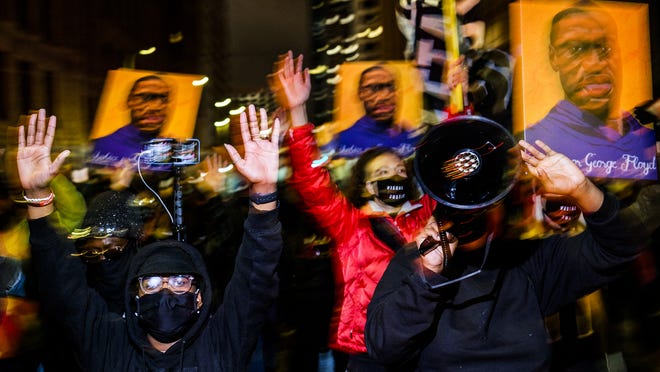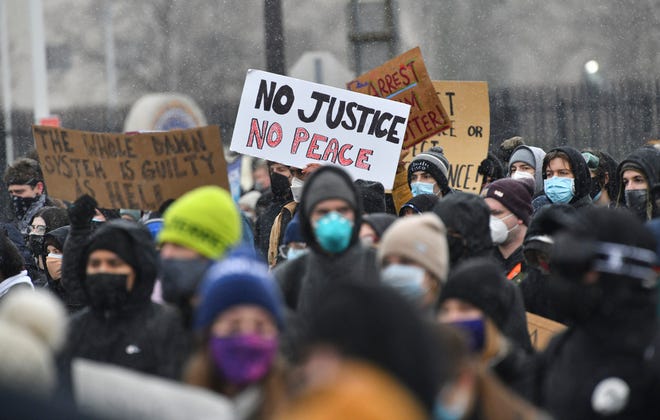SAN FRANCISCO — Police officers responding to an auto burglary in progress here last week found the suspect sitting in the back of a Ford van with a machete in hand.
Over the next three hours, a growing law enforcement group that included a crisis negotiation team and tactical operations experts encircled the suspect. He refused to leave the van, so they engaged him in dialog. At 8:37 p.m., the suspect, Marcel King, a 34-year-old Black man, exited the van without his machete and surrendered.
“By isolating the scene, calling for back-up and generally de-escalating the situation, we got a peaceful resolution,” said Lt. Michael Nevin, who heads training at the San Francisco Police Department’s Field Tactics Force Options Unit. “No-news incidents are the great-news incidents.”
The calm standoff in San Francisco stands in contrast to many high-profile police encounters that have ended in violence in recent years, notably the death of George Floyd while in police custody in May 2020, which started a global movement against racial injustice and excessive use of force by police. More recently, there was the killing last weekend of Daunte Wright, a 20-year-old Black man who was shot by a white police officer in Brooklyn Center, Minnesota, and the shooting last month of 13-year-old Adam Toledo by Chicago police officers.
Those deaths and others have sparked renewed calls for law enforcement training that focuses on serving all members of a community, especially people of color vulnerable because of systemic racism, and puts a premium on de-escalation tactics that minimize violence. But experts say a patchwork approach to police reform has left the nation at a critical crossroad with no clear path forward.
Chief among a number of challenges: the nation’s myriad law enforcement departments each operate under their own guidelines, making the adoption of a unified standard of protocols difficult. The result is some cities are working to update their methods, while others may lack the resources or inclination to do so.
“With 18,000 police agencies and 80% of them having fewer than 50 officers, that is no national way for them to get best practices,” said Chuck Wexler, executive director of the Police Executive Research Forum, a non-profit that provides resources for police officials. “And the training in de-escalation hasn’t fundamentally changed in 25 years.”
Big changes may come if Congress passes the George Floyd Justice in Policing Act, which calls for mandatory training and the creation of a national registry cataloging incidents of police misconduct. The bill has passed in the House but has not yet been scheduled for a vote in the Senate.
Meanwhile, a handful of local lawmakers and law enforcement agencies have taken steps toward reform. Two recent shifts include the removal of qualified immunity for officers in states such as New York, Colorado and New Mexico, and the handling when applicable of 911 calls by mental health professionals, which cities such as New York and Eugene, Oregon, are pioneering.
But some caution that hurdles to reform remain significant. There are roughly 1,000 police incidents of deadly force as well as 50 officer deaths each year. These cases show police disproportionately kill Black people.
“Our communities are over-policed, over-surveilled and under-resourced,” said U.S. Rep. Cori Bush (D-Missouri), who supports the defund the police movement that seeks to redirect government funding to social services. “Decades of placing more money into police training and relying on piecemeal reform have yet to make our communities safer.”
Police training varies in quality, experts say
While most police departments do run officers through some kind of de-escalation tactics program, the quality and efficacy of such classes can vary greatly, experts said.
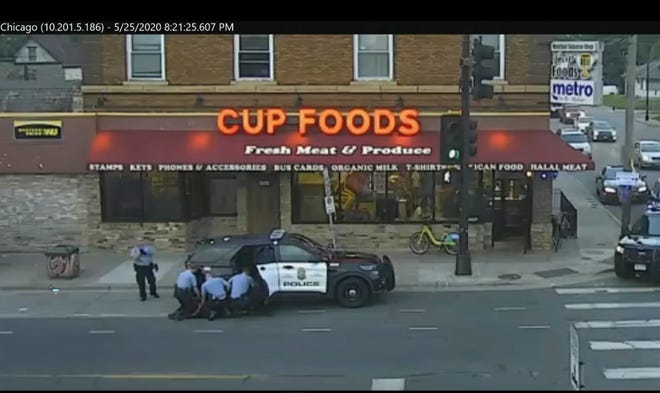
In the case of Derek Chauvin, the former Minneapolis officer on trial for the death of Floyd, prosecutors pointed out that he took 40 hours of training in 2016 on how to recognize people in crisis. Expert witnesses also noted that it was not protocol to use a knee or leg to detain suspects. Yet Chauvin remained kneeling on Floyd’s neck for more than nine minutes as he protested that he could not breathe. Floyd was stopped by police over the alleged use of a counterfeit $20 in a convenience store.
The growing chorus for police reform started in 2014 after 18-year-old Michael Brown was shot and killed by an officer in Ferguson, Missouri, after an altercation. A year later, the officer involved was cleared of wrongdoing by the Justice Department, a judgment that led to protests both peaceful and violent and fueled the rise of the Black Lives Matter social justice movement and a national conversation on police reform.
While there is very little research on the efficacy of one program over another, one exception is training developed by Wexler’s group called ICAT, or Integrating Communication Assessment and Tactics, a series of scenario-based lessons that help officers defuse a situation where a volatile suspect has no weapon. A study of ICAT by the University of Cincinnati showed a reduction in the use of force by officers who had taken the course.
“That was promising, but this isn’t about checking a box with training and moving on,” said Robin Engel, professor of criminal justice at the University of Cincinnati who oversaw the ICAT research. “This training needs to be supported by policies and procedures and field supervisors.”
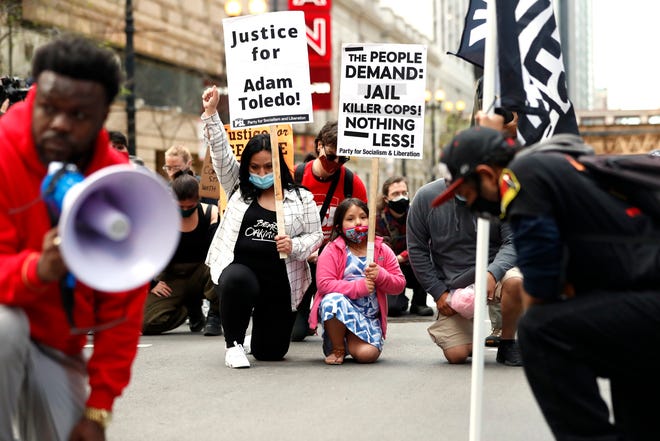
The Fraternal Order of Police, a national organization that represents 355,000 sworn officers, declined comment but emailed a copy of its July 2020 discussion paper on the use of force, which includes a series of guidelines that it recommends for using less lethal approaches to policing.
Police advocates note that many departments are working to implement such strategies — the Dallas police department sent USA TODAY an email outlining its programs which include annual re-certification for Taser and baton use — despite being hampered by budget cuts and more recent calls by activists to defund departments.
Officers also have to do their jobs knowing they face a heavily armed populace. Americans own twice as many guns per capita than any nation in the world, at 120 firearms per 100 people as compared to runner-up Yemen at 52 per 100 people, according to the 2018 Small Arms Survey.
There is also a deeply rooted, historic distrust of police in communities of color, which are disproportionately impacted when it comes to arrests, incarceration, violence and deaths at the hands of police. That reality often results in tense interactions that instantly increase the chances of things going bad.
“Perception is reality, so, whether they deserve it or not, if you don’t think the police are there to help you, if you don’t trust them, that will play into how you react to them,” said Brian Higgins, adjunct professor at John Jay College of Criminal Justice in New York, and former police chief in Bergen County, New Jersey.
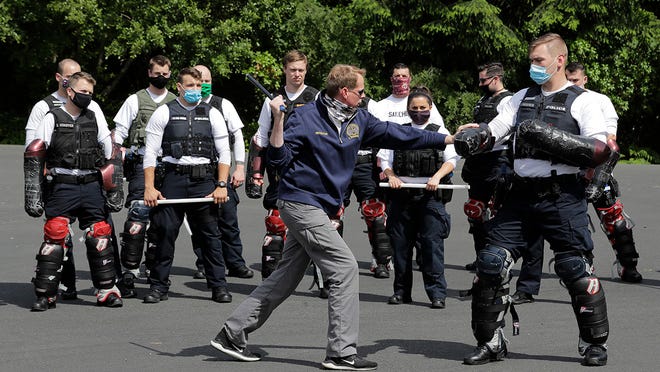
One way to de-escalate tension in confrontations is to change the rules of engagement, experts said. For example, each year around 100 knife-wielding people are killed by police, who can fire upon such suspects if they come within 21 feet, said Rajiv Sethi, professor of economics at Barnard College in New York and co-author of “Shadows of Doubt: Stereotypes, Crime and the Pursuit of Justice.”
“There really no scientific basis in that 21-foot rule, and officers tend not to be killed by a visible knife,” said Sethi, who is studying the use of deadly force by U.S. law enforcement. He said the current cultural climate, one that found hundreds of thousands of Americans protesting last summer and Confederate symbols gradually removed, could mean an overhaul of police tactics is forthcoming.
“When an incident like the one with Duante Wright happens, we want to assign culpability,” he said. “But the responsibility lies with the system, with rules of engagement, with training. And sometimes, as in Camden, a complete overhaul happens.”
Police departments remain disproportionately white
In 2012, officials in Camden, New Jersey, voted to disband its police force and made all officers reapply for their jobs at a lower salary so more staff could be hired. The year before, the city had the highest crime rate in the nation, with 60 murders per 100,000 people.
Police Chief Gabriel Rodriguez, who was on the original force, said de-escalation “was a foreign word to me” before 2012, but it has become a byword in the new department.
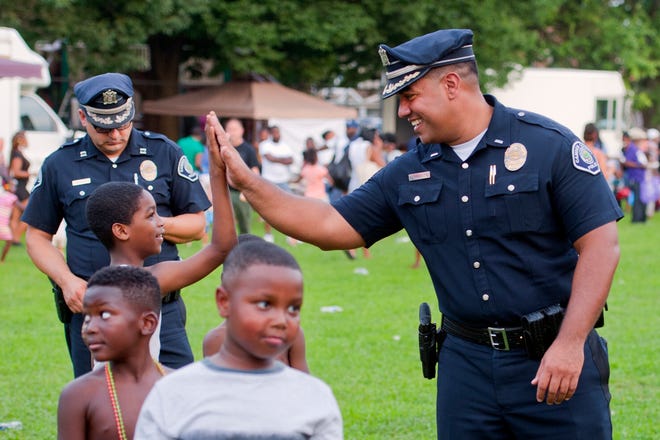
“We had a warrior mentality, and we have shifted to a guardian mentality,” said Rodriguez, a Camden native. “It has to be part of the culture, one where we slow things down, call for backup and keep our distance. And I communicate this on a daily basis.”
Camden’s experiment remains a subject of community debate. Rodriguez notes that violent crime has dropped significantly in the city and officers spend more time getting to know citizens. But critics contend that the restructuring has simply meant more white police officers in neighborhoods that are largely Black and Latino.
Another key to improving policing, experts said, is making the force a reflection of its community. But bringing more Black, Latino and Asian officers into a majority white force remains a hiring challenge hampered by a growing list of fatalities of people of color that includes Breonna Taylor, Philando Castile, Daniel Prude, Stephon Clark, and Oscar Grant.
“You don’t just all of a sudden get Black and brown officer candidates, it has to be a strategic and organized mandate,” said Lynda Williams, a former high-ranking Secret Service agent who is president of the Virginia-based National Organization of Black Law Enforcement Officers.
To get recruits of color, “they need to see a favorable disposition of police, not just interactions during adversarial times,” said Williams. “We want national standards for de-escalation training, but departments are left to their own devices.”
Some policing veterans claim training itself is not enough. They said first the character of an officer must be thoroughly assessed.
“Department brass often knows who is not cut out for high-stress roles, and they do nothing,” said Eric Adams, a former New York City police officer who is running for mayor. “If we have the right officers with the right skills, personality and unbiased mindset, we will significantly reduce incidents like we saw in Minneapolis.”
In San Francisco, efforts are underway to create a better rapport between police and citizens while reducing the number of deadly force incidents that make national headlines.
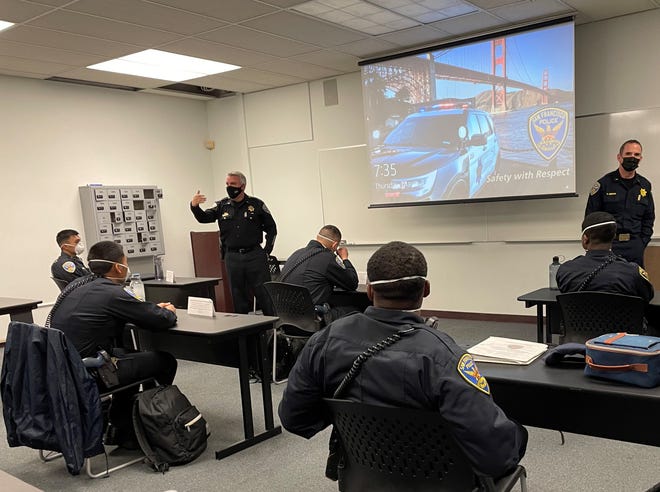
Among the training sessions officers are required to take are 40 hours of de-escalation and crisis intervention tactics, as well as state-mandated 8-hour blocks dedicated to reviewing use of force and other protocols. There are also sessions focused on implicit bias and the duty to intercede and report any improper actions of fellow officers.
One course pioneered by Nevin and his team is called “Critical Mindset and Coordinated Response,” which is designed to guide officers through situations that could get confrontational quickly, as with last week’s incident involving the man with the machete.
“If we’re going to put people in this line of work, we can’t not train them,” said Nevin. “To evolve standards for policing, we must have discussions of how things used to be and where they are now expected to be.”
